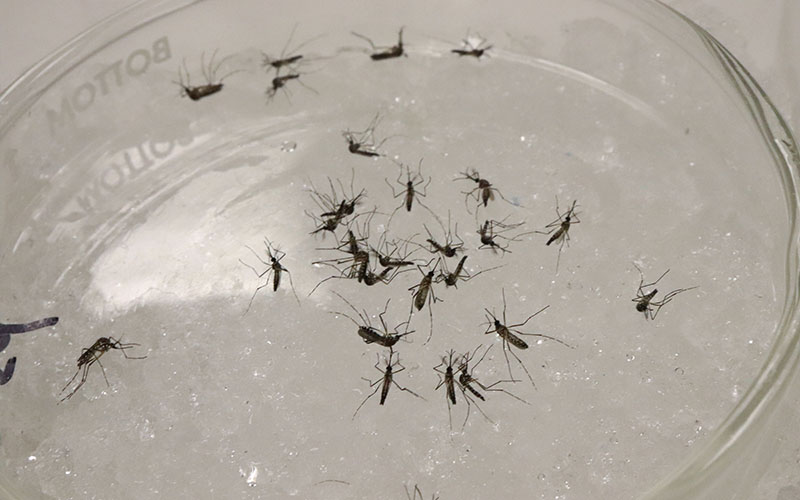PHOENIX – Mosquitoes, beyond irritating people with bites that itch, transmit the West Nile virus. The pests have helped lead to a rise in people infected with the deadly virus in Arizona this year.
As of July 19, the Arizona Department of Health Services has reported 34 confirmed cases and 23 probable cases of West Nile in Maricopa County. Two other probable cases were reported in Pinal County. One case resulted in the death of an older adult who also had other chronic health conditions.
The 2019 cases have already eclipsed the total for all of last year, when AZDHS reported 27 cases of the virus.
West Nile is is the leading cause of mosquito-borne disease in the continental United States. According to the Centers for Disease Control and Prevention, only 1 in 5 people infected with the virus develop flu-like symptoms, but 1 in 150 cases can turn fatal.
Symptoms include fever, headaches, body aches and muscle weakness.
Mosquitoes spread West Nile to humans, but they aren’t the originators of the virus. According to the CDC, mosquitoes are infected with West Nile from birds carrying high levels of the virus in their bloodstreams. Those infected mosquitoes then pass the virus to humans when they bite.
Johnny Diloné of Maricopa County Environmental Services said wetter weather has given mosquitoes additional breeding grounds and allowed birds to remain in the area longer than usual.
“It can be due to the accumulation of water that we had through spring,” he said. “We had a wet spring and a lot of water here in the valley. That resulted in the birds staying longer.”
While there is no cure for West Nile Virus, the best way to halt the spread of the illness is to attack the source. Diloné said the first step is to prevent mosquito breeding.
“The first thing is to make sure we go around our house and we don’t have any containers that will be containing water,” he said. “Even a little bit of water on a water bottle cap would be good enough for mosquitoes to breed.”
Residents who notice an area that seems perfect for mosquito breeding should contact Maricopa County Environmental Services.
The second step is to prevent mosquito bites.
“‘Fight the bite day and night’ is what we say, but particularly during dawn and dusk,” Diloné said. “That’s when the mosquitoes that could carry West Nile are most active.”
People also should wear bug repellent and long-sleeved clothing, limiting skin exposure.
West Nile was first detected in the United States in 1999, making its way to Arizona in 2003, but how it originated is still unknown. The virus has long been present in Africa, West and Central Asia and the Middle East.
There were 50,830 cases of West Nile reported to the CDC nationwide from 1999 to 2018. Arizona ranks ninth among all states, with 1,754 of those cases.
Visit the AZDHS website for more information on the history of West Nile in Arizona and prevention techniques.
Follow us on Twitter.
